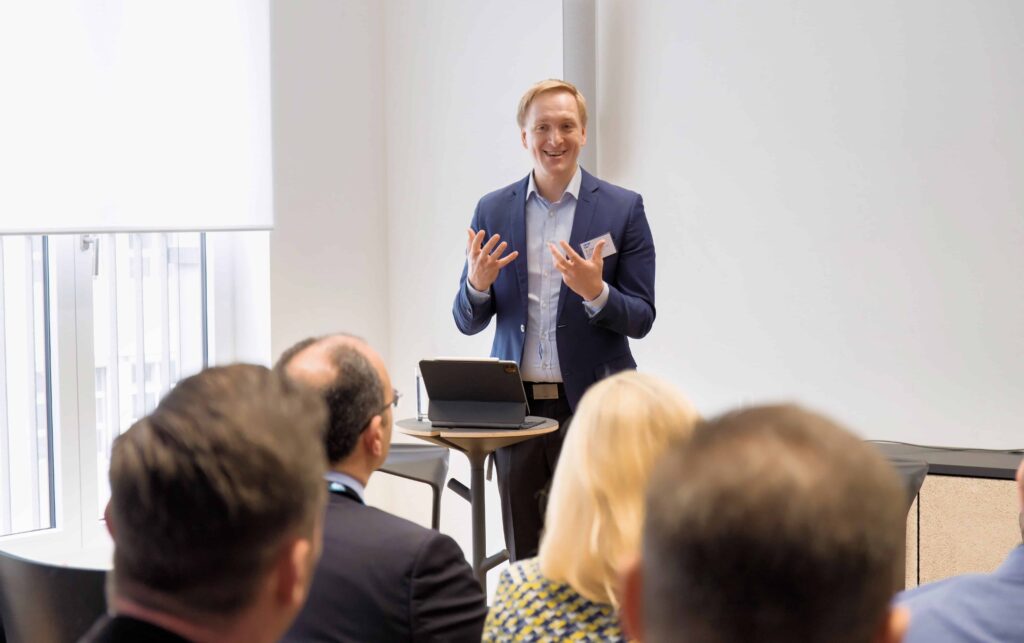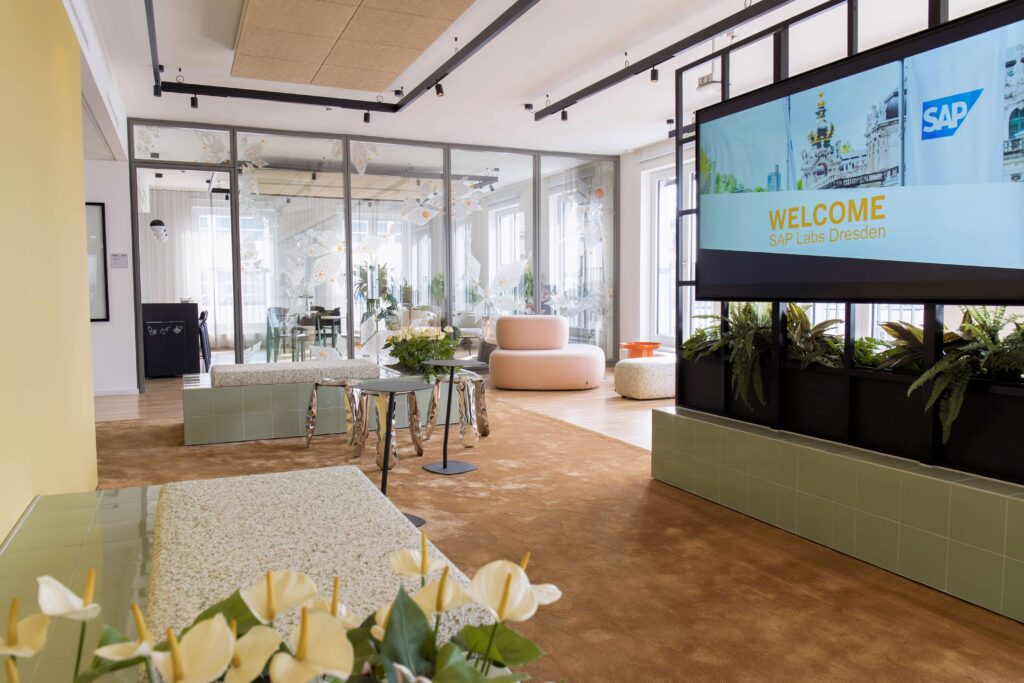SAP held a grand opening on March 8 for its new office building (DRE07) in Dresden, Germany. Together with SAP’s existing presence in the city center, DRE07 is part of an expanded SAP campus that comprises the new SAP Labs Dresden location and further strengthens the close collaboration between developers at SAP. Juergen Mueller, chief technology officer and member of the Executive Board of SAP SE, hosted the grand opening that was attended by representatives from politics, press, business, and science.
The new SAP Labs Dresden location is part of SAP Labs Network, which promotes close alignment with the other development locations in Germany and around the world. With this strategic move, SAP is further focusing on local talent, utilizing the growth potential of the local ecosystems. An important building block to achieve this is even stronger collaboration across the development units in SAP.
The main topics being worked on in Dresden are at the core of SAP’s strategy focusing on cloud enterprise resource planning (ERP) and SAP Business Technology Platform (SAP BTP). These topics include cloud security, analysis and planning, cloud infrastructure, and industry networks in the context of the intelligent, sustainable enterprise. “We are also working here on SAP’s core competencies across all Executive Board areas. The teams make an important contribution to SAP’s focus topics and the success of our customers,” Mueller said at the opening.

Dresden Joins SAP Labs Network
The new location is now part of SAP Labs Network, a global network of research and development centers dedicated to the advancement of innovative technologies. The network consists of over 20 labs worldwide, including China, India, Germany, Brazil, and the United States. Each location focuses on different areas, such as artificial intelligence (AI), cloud computing, or process automation, amongst others. “The focus is on our developers working together and delivering our products,” said Michael Ameling, senior vice president and head of Intelligent Enterprise and SAP BTP Foundation and managing director of SAP Labs Dresden.
Other SAP Labs Network locations in Germany are located in Walldorf, St. Leon-Rot, Berlin, and Munich. With this change, Dresden will now become an important location for further cooperation of the different development units as a central innovation driver.
A Location with Tradition
SAP has a long-lasting relationship with Dresden. The city became SAP’s second mainstay in eastern Germany after the fall of the Berlin Wall in 1989. In 2008, SAP built an office building (DRE04) opposite the Dresden Zwinger for around 500 employees. But the workforce has been growing ever since and the old location is now far too small for the now almost 1,000 employees. In recent years, Dresden and the region has become an important location for cloud development in Germany. With the new building, SAP wants to continue writing its history: “We are all super excited here in Dresden. With this new location, we are realizing our vision of the SAP Campus in Dresden,” Stephan Klein, senior vice president of Cloud Success Services and site manager of SAP Dresden, said.
The region has a strong focus on microelectronics, dating back more than 30 years, and is now driving its path into the future. In addition to university and non-university research, the region is characterized by a number of startups as well as technology and innovation centers. All these factors and advantages together were decisive for SAP’s decision to invest in the location.
At SAP Labs Dresden, the close cooperation with the local ecosystem is now also accessible to other development hubs around the world as part of SAP Labs Network. Among other things, there are projects and educational engagements with the University of Excellence TU Dresden and local partners, such as the State Chancellery and Silicon Saxony.

Collaboration and Talent Attraction
The new building also focuses on the needs of employees and therefore considers future of work concepts. With the new location, SAP wants to position itself as an attractive employer in the highly competitive market for young talent. “We want to get closer to the talents. That’s why we chose the location in the heart of the city, which is easy to reach by public transport,” Mueller said. SAP seeks contact with young talent at a very early stage, such as in schools or through projects with universities. The goal is to inspire them to join SAP, whether during or after their studies.
Mueller emphasized the need to “set super high standards in collaboration, to create moments that matter, and also to be curious.” In Dresden, it’s not just about networking within the company, but far beyond that. Above all, it is about the local ecosystem, from which all other levels will be able to benefit. “We all want to create value and that works best if we work hand in hand because what we do at SAP is a team sport,” Mueller added.
“Innovation and cooperation are only possible in an ecosystem,” said Mirko Paul, COO of SAP Labs Dresden. One example of this is the automotive industry and the European Catena-X project, in which SAP plays a key role by providing the digital core of the project. Catena-X is a collaborative and open data ecosystem for the automotive industry with the goal to create uniform standards for the flow of data and information in the automotive value chain. “This is only possible if you work with partners directly in manufacturing or on logistical processes. This currently also affects small and medium-sized companies,” Paul said.
Photos by Norbert Steinhauser



